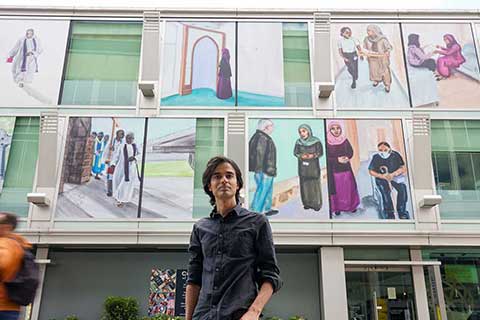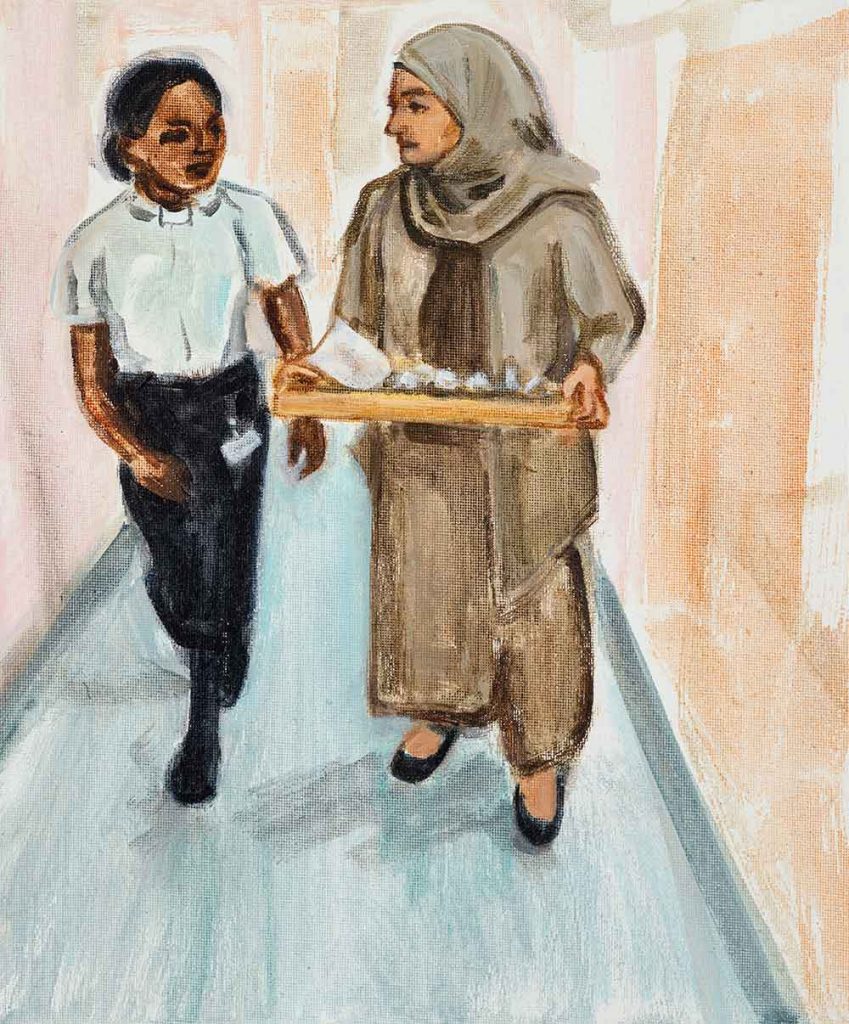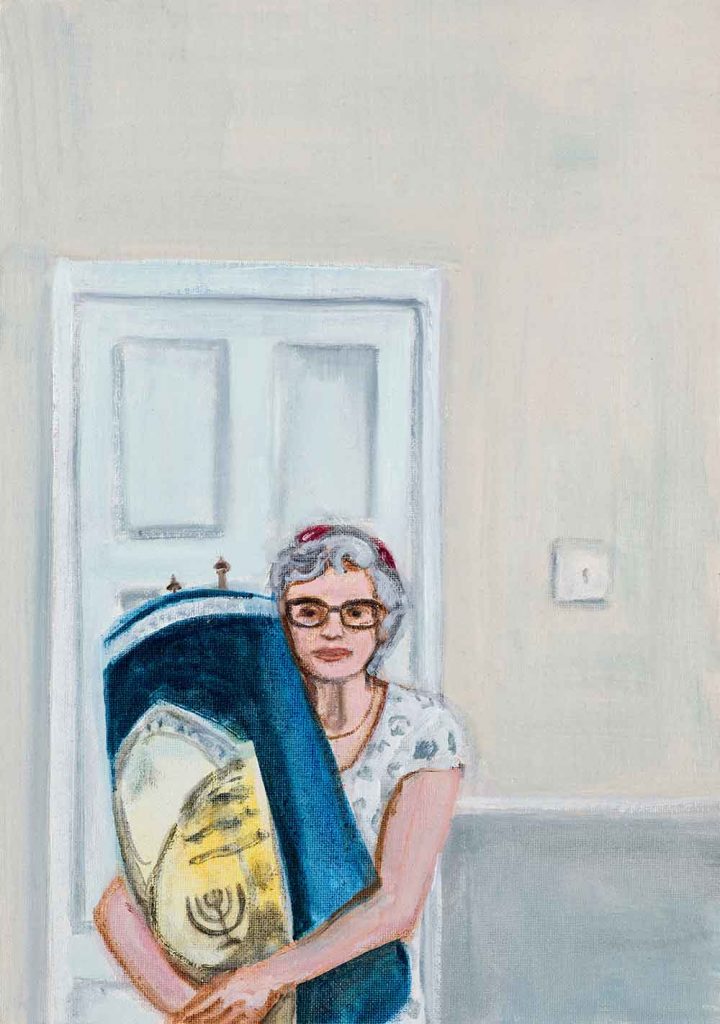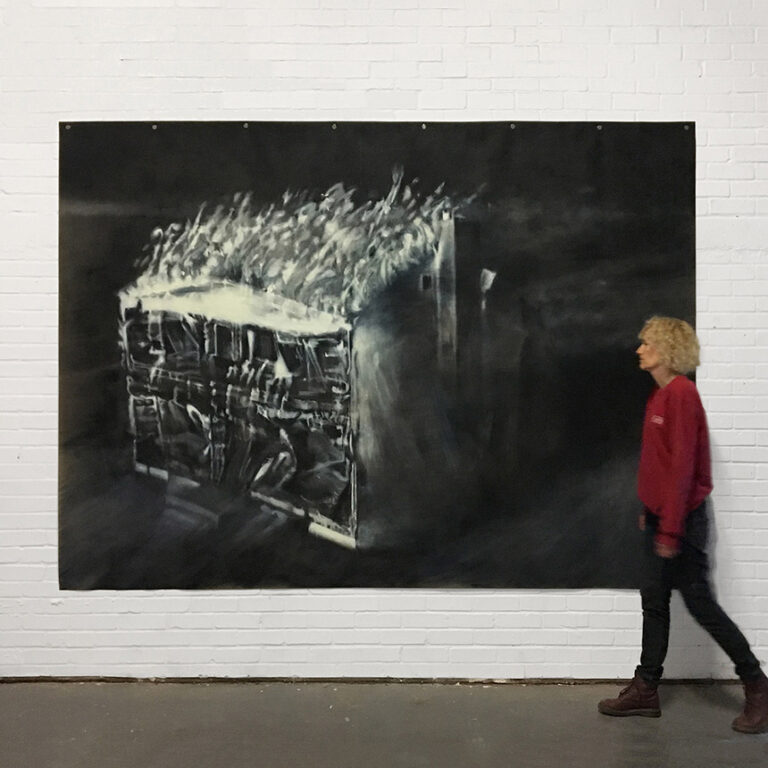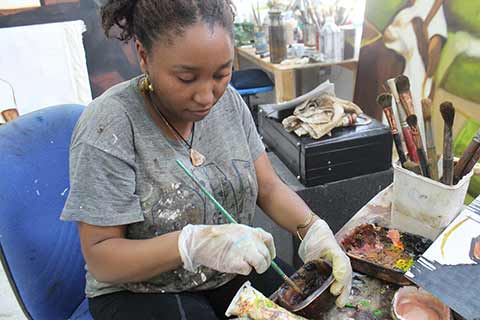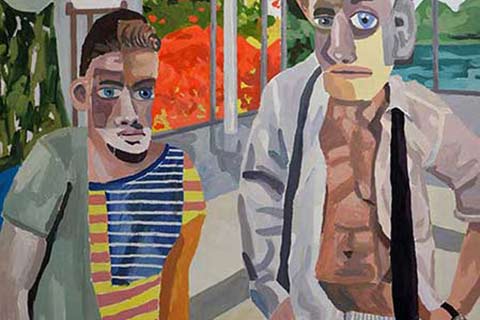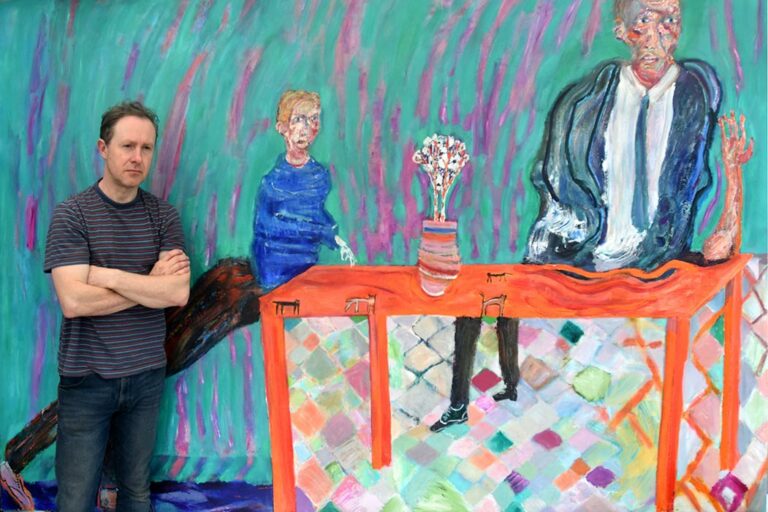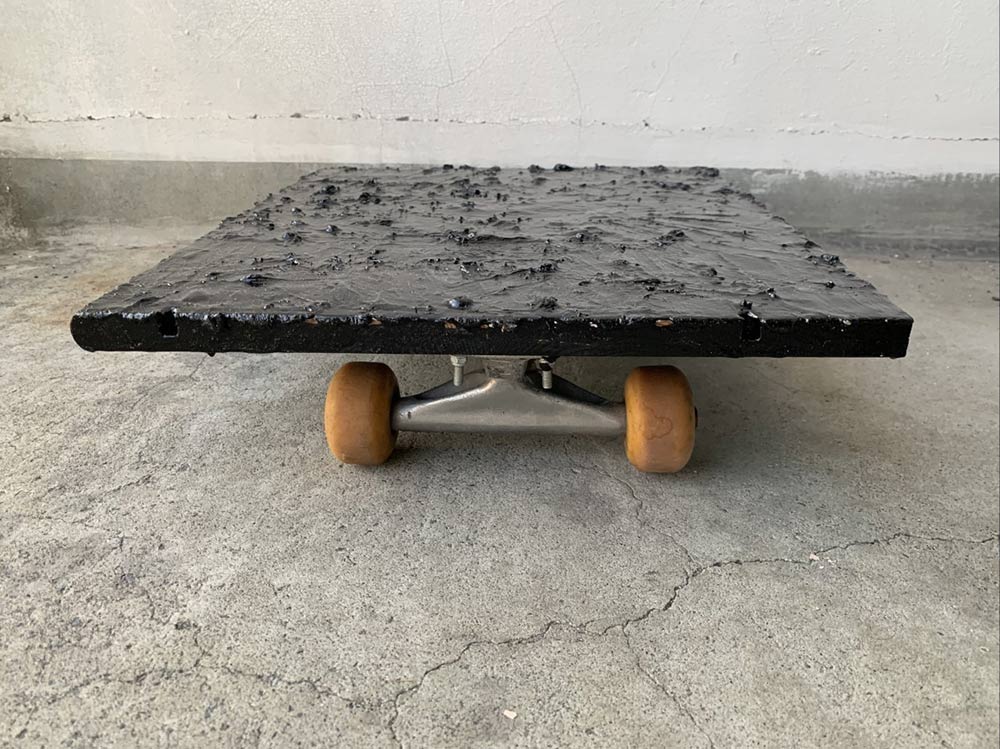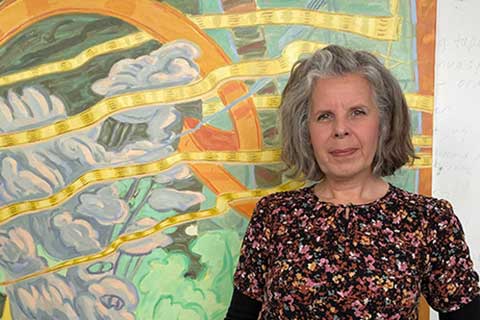Matthew Krishanu: Artist of the Month
Artist of the Month October 2020.
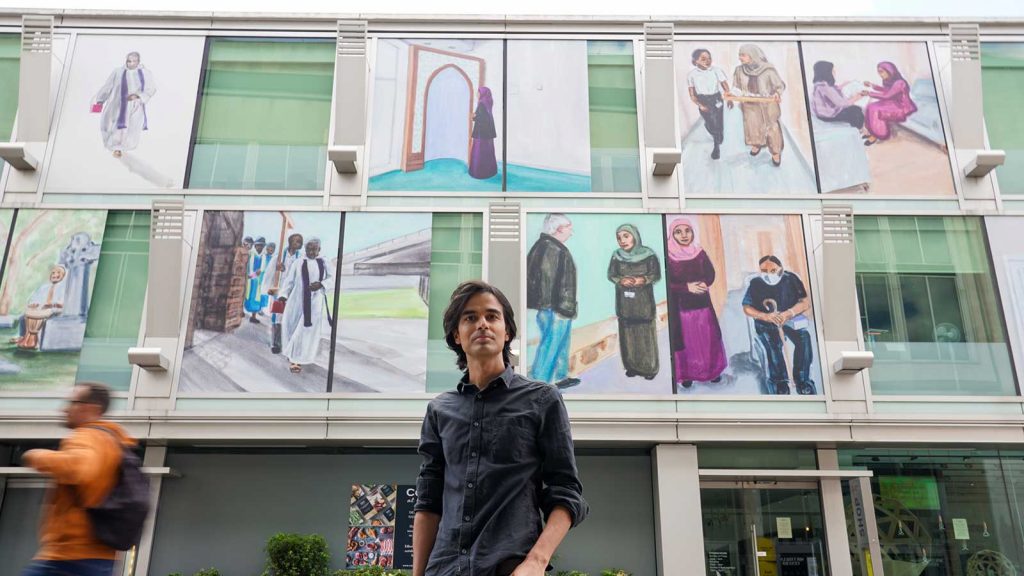
This month CBP talks to Matthew Krishanu about his commission for the Hayward Gallery / Southbank Centre; ‘Everyday Heroes’. Matthew is one of a select group of featured artists and poets celebrating the contributions of key and frontline workers during the current pandemic.
CBP: Congratulations for your significant contribution to the Hayward Gallery / Southbank Centre’s ‘Everyday Heroes’ project. Has the commission given you a particular set of challenges in terms of the context of display of enlargements of your paintings on the outside of a public building, or have you been able to make the work in your usual manner and approach?
Matthew Krishanu: In a way the challenges were more for the curatorial team to work out how best to arrange an outdoor show that would be weather resilient, impactful, and on a scale that would catch the attention of passing viewers. My process in the studio was similar to how I normally work. I had a personal connection with the people in my subject matter (all the religious workers I depicted are based in Birmingham and have links to my parents), and my challenge was to make at least one successful image that could be enlarged for display. The project quickly took over my studio practice and I spent six weeks full time working on the series. I ended up making twenty pieces, of which twelve paintings and one work on paper were used for the display.
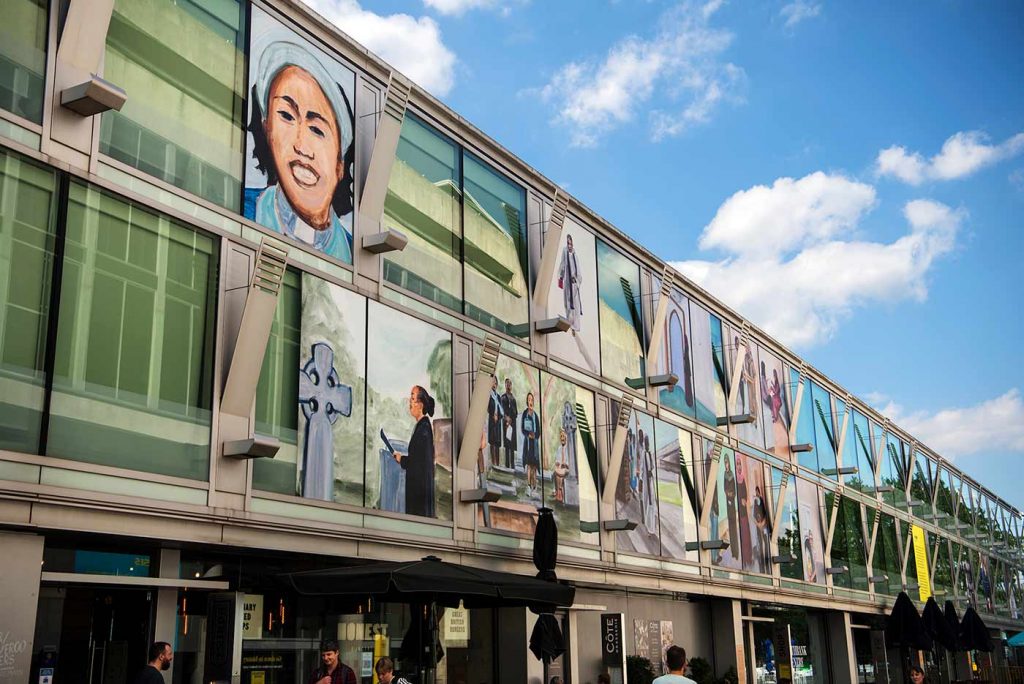
CBP: There is a distinct narrative of NHS and faith workers in action, depictions of everyday interactions between people and spaces, snapshots even. Were you conscious of creating a type of portraiture that was dynamic rather than static?
MK: I wanted to avoid straight portraiture in this project – rather, I wanted to make paintings that both seemed to refer to particular people (and have the implication of a likeness) but could also be more generic scenes that have a wider reading. I created the images to be easily read from afar – for instance as hospital scenes, or burial, or religious settings – which could then be given additional context by the titles (e.g. ‘Two Hospital Chaplains (Rehanah Sadiq and Revd Jackie Gayle)’. I chose to combine scenes of action and movement with images of stillness and reflection. As in ‘Two Hospital Chaplains’, where the figures are walking out towards the viewer, in ‘Procession (Revd Canon Eve Pitts)’ we face a group moving towards us. ‘At Home with Torah Scroll (Rabbi Margaret Jacobi)’ has a particular resonance in the coronavirus context, as places of religious worship were closed, and in many cases religious leaders were serving their communities from their own homes.
CBP: The juxtaposition between hospital architecture, industrial and faith architecture, both permanent and temporary seems pertinent and compelling, can you talk about this aspect of the narrative?
MK: In ‘Procession’ I painted Eve in her ceremonial robes, while also capturing the old stone church on her right, and a Birmingham road and flyover to her left. I wanted to anchor the people depicted in a scene that was both resonant of the modern city, and the historic church. In ‘Hospital Chaplain and Mihrab (Rehanah Sadiq at Queen Elizabeth Hospital, Birmingham)’ I chose to portray a moment alone in the active hospital setting. The Mihrab denotes the direction of Mecca, and in this instance the Mihrab at the hospital is covered in a mosaic of over 1000 prayer tiles. I was interested in the arch and tiles of the Mihrab contrasting with the stark (but part daylit) interior of a modern hospital. I was thinking of both Mughal Miniatures and Edward Hopper in this composition. In ‘Deseta Singing – Burial (Revd Deseta Davis)’ the old gravestones provide the setting for our crisis.
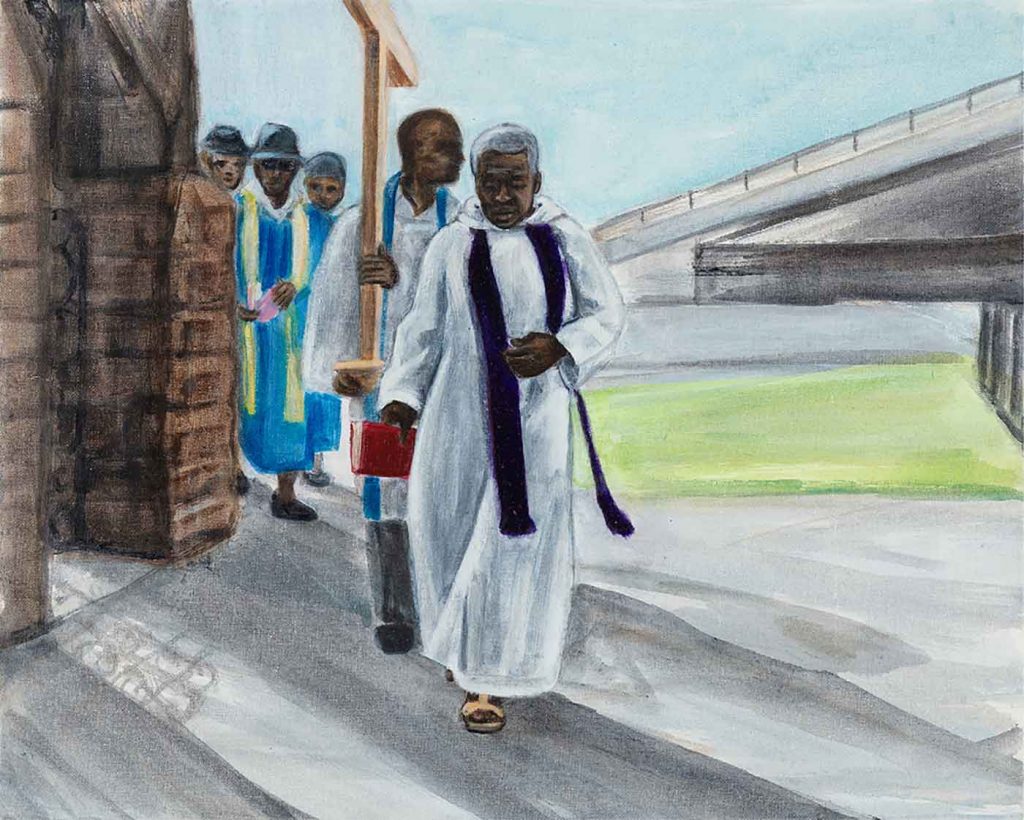
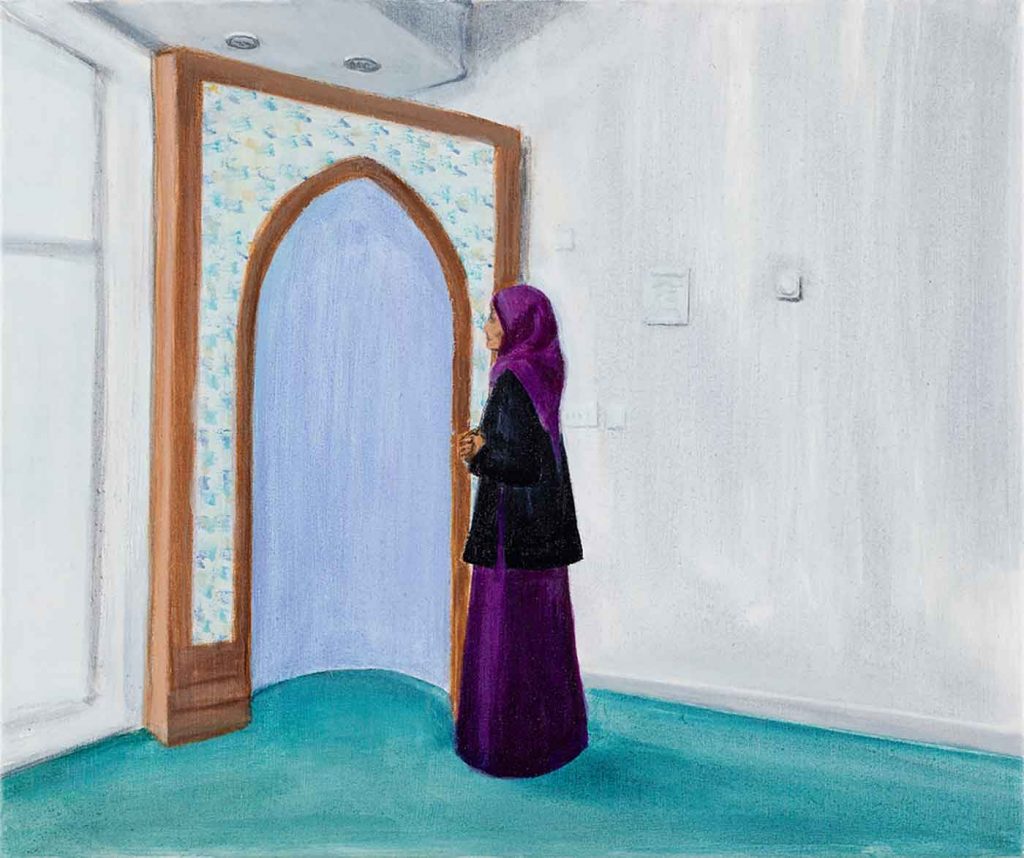
CBP: Can you talk about the range of source materials for the series? You’ve mentioned before that some were based on photographs given to you from a third party and some are more personal to you.
MK: All the source material was sent to me as photographs by the religious workers depicted. They provided a large enough range of images for me to edit down and select the ones that most appealed to me for painting. In addition, I used two personal photographs for the ‘Deseta Singing’ paintings – this scene was of a burial before the Covid 19 pandemic, which I re-imagined for our present time.
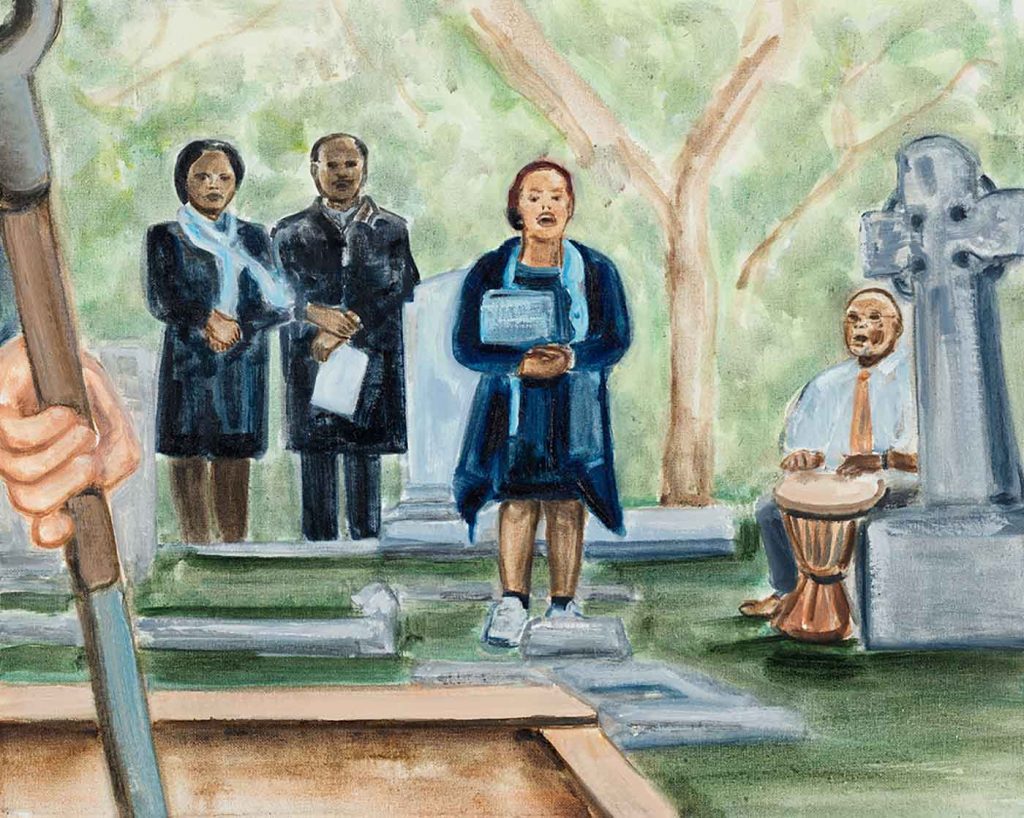
CBP: Can you discuss your strategies for moving between photographic referent, memory, and pictorial design and invention in the construction of your painting in general?
MK: In each case I ask myself how best an image or scene would translate into a painting. I start off with sketching a scene lightly in thin washy paint, which allows me to edit out elements at this stage, and construct the composition. I had initially intended to work on paper only (partly due to time constraints), but as the project grew in my studio I moved to acrylics on small canvas boards, then to oil paintings on canvas (larger than the canvas boards). While the scale of the final image was going to be printed at billboard-size proportions, the intimacy of mark-making at a smaller scale in my studio was important to me. I wanted the paintings to feel personal and familiar rather than grand and monumental.
CBP: Sometimes your painting technique intentionally shows the appearance of underpainting and different stages of evolution as part of the finished work. Drawing through painting seems integral in terms of capturing the immediacy and intimacy of your subject, is this intentional or just instinctive?
MK: I always draw with the paint itself rather than using charcoal or pencil as underdrawing. This allows me to develop a painting in layers, sometimes leaving the background more light and airy, while denser elements (like the priest’s robes in ‘Procession’) are built up in thicker, opaque paint. I like the trace of the brush stroke and hand to be visible in the paintings – I want them to communicate as paintings rather than photographic images.
CBP: The theme of faith and religious ceremony is an ambitious undertaking across several series in your work. It is both objective, matter of fact and intimate and personal. What is your relationship with it, is it separate or tied in implicitly with what you’re aiming for through its depiction in your painting?
MK: I am interested in making paintings that are about religion (without being religious paintings). This presents interesting challenges regarding the construction of the imagery, how people and symbols are presented, and questions around my own role and identity as the painter. For me the core of the paintings is that they are also psychological portraits of particular people taking on a community role. The religious symbolism, costumes or props that religious figures carry have particular cultural histories and significance, but I’m most interested in the humanity of the person (or people) depicted. The religious context then relates to political and historical currents that I also want to explore.
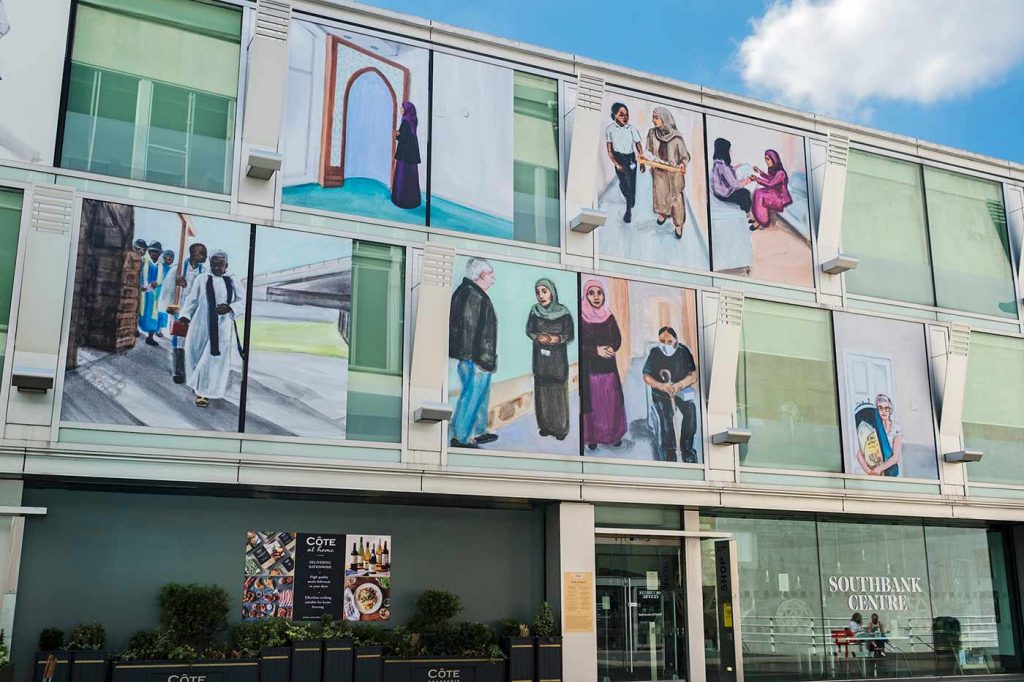
CBP: You also have a solo exhibition at the recently established Niru Ratnam gallery. Can say a few words about this show and how it draws from the interconnecting series of works from your portfolio?
MK: My show at Niru Ratnam Gallery grew out of a conversation in my studio with Niru about my paintings of missionaries and priests in India and Bangladesh (my Mission series), and in particular the large painting ‘Mission School’ (which was last shown at the John Moores Painting Prize in 2018). Other than ‘Mission School’ the exhibition is largely all new works, drawing out the relationships between my works which depict children (in particular two boys) in landscapes, alongside scenes of Christian ritual and ceremony – usually taking place indoors. While I’d been painting works for this show during lockdown (in particular images of Indian priests and nuns), I had been thinking of how religious workers were currently at the forefront of dealing with the coronavirus – giving comfort to the bereaved and burying the dead. When in June I received a call from the Hayward Gallery asking me if I would be interested to make a work about a key worker – religious workers immediately came to mind, and the series of paintings for ‘Everyday Heroes’ began.
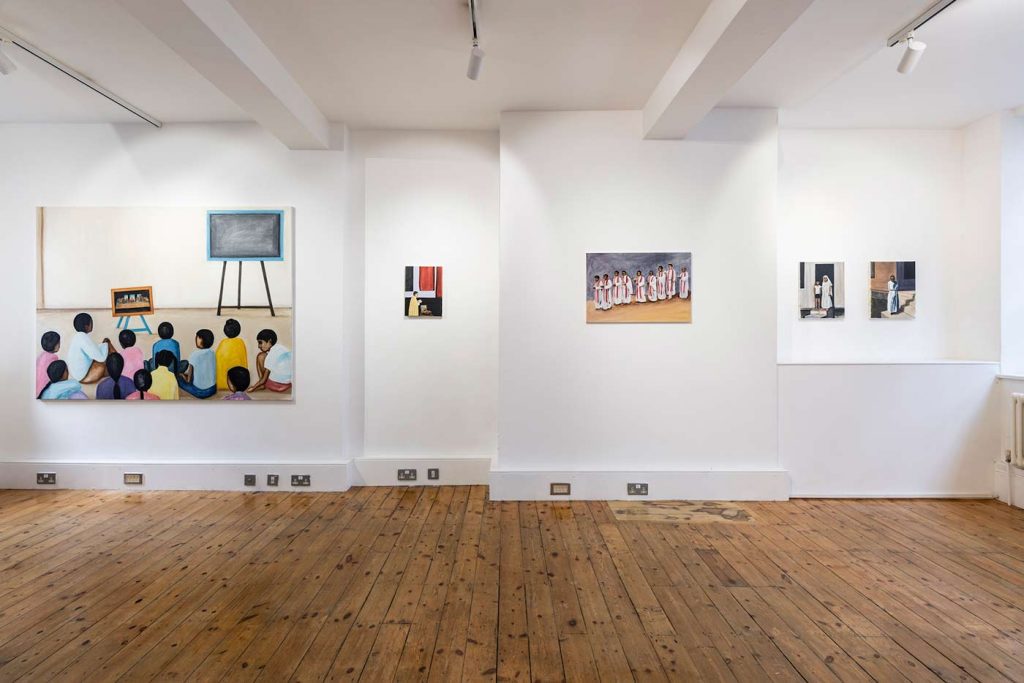
Watch Matthew Krishanu on the following YouTube link discussing his paintings of workers in Everyday Heroes:
Everyday Heroes: Matthew Krishanu | Hayward Gallery
Everyday Heroes, Hayward Gallery / Southbank Centre
Picture Plane at Niru Ratnam



